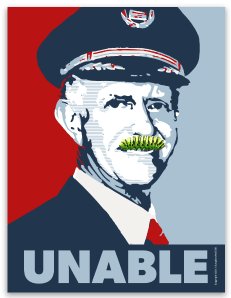Zaibatsu wrote: ↑Sun Aug 09, 2020 3:26 pm
The most important thing about automation is that it has to be monitored. It’s so important that we have two pilots monitoring it even though none are physically flying it. ATC would be over their head with two aircraft, never mind a dozen.
ATC clears you to climb to 350 and on course. All he knows is that’s what you want and there’s no traffic in the way. He doesn’t know what vertical mode you are going to use to get there. He doesn’t know about the storm cell in your path. He doesn’t know about the CAT you’re going to encounter at 330. He doesn’t know that you’re going to have an emergency or abnormality that’s going to require deviations from your cleared route and quite possibly a change in destination based on first hand information.
And that’s a sleepy area control centre. Not terminal where they are in the middle of switching runways and now you have to reprogram the FMS and rebrief, or the ILS just went offline, or a plane didn’t hold short or occupied the runway for too long. All of those could be dangerous or deadly without direct and present human interventions.
I wouldn't see ATC as a remote pilot for every airplane. They would just issue instructions on their computer screen during standard ops. If for some reason, the "computer brain" or whatever you want to call it, on a remote plane would fail, then they could focus on that one plane.
If you encounter turbulence at a certain flight level, don't you usually query ATC where the better flight level might be? It's easy to add sensors to airplanes to measure the turbulence, the computer brain could then request a climb or descend, or ATC could propose one. That's not hard to build in.
Once you commit to a pilot less aiprlane, the inputs become much easier. No interface is required, no need to confirm critical data for liability reasons, as the computer does it all anyway. A runway chance should be non event at that point. That's easy software to program. The whole IFR system is already set up pretty robust.
During an emergency, you evaluate the systems you have left, the possible destinations and analyze weather, services etc. That's stuff that could be programmed as well. It shouldn't be a problem. Will the computer always find a solution that would be as good as a human would? No. That's part of the trade off humans vs computer that manufacturers, companies and politicians will have to make.
Rockie wrote: ↑Sun Aug 09, 2020 4:19 pm
2018.
Ok, if that still happens than your plane would obviously not be a good candidate to fly pilotless at this point. That's why you are still on board. That doesn't mean that a software upgrade couldn't fix these issues.
Rockie wrote: ↑Sun Aug 09, 2020 4:19 pm
What part about "every clearance and instruction given to a pilot by ATC can be rejected by the pilot for safety reasons ATC is neither aware of or responsible for" did you not understand?
Nothing, but it is't entirely relevant. ATC now gives instructions and clearances with the understanding that the pilots have the final decision. If there are no pilots on board, it stands to reason that the instructions and clearances that ATC is allowed to give you, will be different.
Another way to think about is this: all the information that is on a screen or a dial in the airplane somewhere, is information that the computer brain has access to. All information that a pilot gets via ATC, is information that the computer brain can also get. What other source of information do you need? In extreme cases where you lose most of your instruments and GPS etc, you might have to look outside to land visually on a runway that is theoretically too short but is your only way out. How often does this happen in an airline scenario?
You can have pax concerns. That can be handled by flight attendants. Press an emergency button, indicating the severity of the pax emergency, and the computer brain will decide where to go.
The technology to do this exists.





